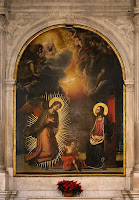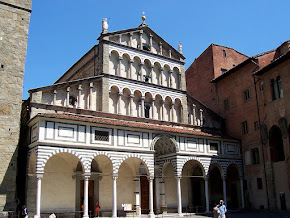Ludovico Scarfiotti - racing driver
Last Italian to win ‘home’ Grand Prix
The racing driver Ludovico Scarfiotti, whose victory in the 1966 Italian Grand Prix at Monza is the last by an Italian, was born on this day in 1933 in Turin. His success at Monza, where he came home first in a Ferrari one-two with the British driver Mike Parkes, was the first by a home driver for 14 years since Alberto Ascari won the last of his three Italian Grand Prix in 1952. It was Scarfiotti’s sole victory - indeed, his only top-three finish - in 10 Formula One starts. His competitive career spanned 15 years, ending in tragic circumstances with a fatal crash in 1968, little more than a month after he had come home fourth in the Monaco Grand Prix in a Cooper-BRM. Scarfiotti in some respects was born to race. His father, Luigi, a deputy in the Italian parliament who made his fortune from cement, had raced for Ferrari as an amateur. His uncle was Gianni Agnelli, the powerful president of Fiat. He first raced in 1953 and he won his class in the 1956 Mille Miglia. He joined Ferrari in 1960 and finished fourth on the Targa Florio. Although he subsequently drove for OSCA and Scuderia Serenissima, he returned to Ferrari in 1962. Read more…
_______________________________________
Cristoforo Benigno Crespi - entrepreneur
Textile boss created industrial village of Crespi d’Adda
The entrepreneur Cristoforo Benigno Crespi, who became famous for creating a company-owned village around his textile factory in Lombardy, was born on this day in 1833 in Busto Arsizio, about 34km (21 miles) northwest of Milan. A textile manufacturer, in 1869 Crespi bought an area of land close to where the Brembo and Adda rivers converge, about 40km (25 miles) northeast of Milan, with the intention of building a cotton mill on the banks of the Adda. The factory he built was substantial, with room for 10,000 spindles, but as well the capacity to produce textiles on a large scale, Crespi recognised that it was essential to his plans to have a contented workforce. Consequently, following the lead of other manufacturers in the textile industry outside Italy, he set about providing on site everything to meet the daily needs of his employees. In addition to the factory premises, he built homes for his workers, a school, a wash-house, a hospital, a church and a grocery store. Houses were built in English-style parallel rows, with gardens and vegetable plots, and the streets were the first in Italy to have modern electric lighting. Read more…
______________________________________
Theft of Caravaggio masterpiece
Fate of Nativity taken from Palermo church remains a mystery
One of the most notorious art crimes in history was discovered on this day in 1969 when a housekeeper at the Oratory of Saint Lawrence in Palermo arrived for work to find that the Nativity with St. Francis and St. Lawrence, painted by the Renaissance master Caravaggio in 1609, had been stolen. The painting sat above the altar in the Oratory, which is situated in Via Immacolata in the centre of the Sicilian capital, adjacent to the Basilica of Saint Francis of Assisi, but when the housekeeper, Maria Gelfo, opened up with her sister on the morning of 18 October, they were confronted with an empty frame. Worth an estimated £20 million (€23.73 million; $27.52 million), the painting has never been found, leaving half a century’s worth of theories about its fate to remain unproven. Most of the theories link the theft to the Sicilian Mafia. It is assumed that the painting was taken during the night of the 17-18 October, although the weather was reportedly awful, with a lightning storm raging for much of the night and Palermo suffering a deluge of rain, hardly ideal conditions for carrying a valuable work of art from a church to a waiting vehicle. Read more…
______________________________________
Luca Giordano – artist
Talented Neapolitan was renowned for being a fast worker
Luca Giordano, the most celebrated and prolific Neapolitan painter of the late 17th century, was born on this day in 1634 in Naples. His nicknames were Luca Fa Presto - "Luca work faster" - said to derive from the way his father, the copyist Antonio Giordano, used to admonish him, Fulmine (the Thunderbolt) because of his speed, and Proteus, because he was reputed to be able to imitate the style of almost any other artist. Giordano’s output both in oils and in frescoes was enormous and he is said to have once painted a large altarpiece in just one day. He was influenced at the start of his career by Jose de Ribera, who he was apprenticed to, and he also assimilated Caravaggio’s style of dramatic intensity. But after Giordano had travelled to Rome, Florence and Venice, his style underwent a profound change. The influence of Pietro da Cortona’s frescoes in the Pitti Palace in Florence can be detected in Giordano’s huge ceiling fresco in the ballroom of the Palazzo Medici-Riccardi, which he completed in 1683, and he became noted for his showy use of colour. He went to Spain in 1692 as court painter to Charles II and stayed there till 1702. Read more…
_______________________________________
Luke the Evangelist
Scientists believe Saint is buried in Padua
The feast day of St Luke the Evangelist - la festa di San Luca - is celebrated in Padua and throughout Italy on this day every year. Luke the Evangelist is believed to be one of the four authors of the Gospels in the New Testament. Both the Gospel according to St Luke and the book of Acts of the Apostles have been ascribed to him. Luke is believed to have been a doctor who was also a disciple of St Paul. It has been claimed he was martyred by being hung from an olive tree, although other sources say he worked as a doctor until his death at the age of 84. He is regarded as the patron saint of artists, physicians, surgeons, students and butchers and it is strongly believed that his body lies in the Basilica of Santa Giustina in Prato della Valle in Padua. It is thought that Luke was a Greek physician who lived and worked in the city of Antioch in ancient Syria. He is mentioned in some of St Paul’s Epistles and he is believed to have been with Paul in Rome near the end of his life. After Luke’s death it is believed he was buried in Thebes but his remains were later transferred to Constantinople. They are thought to have been bought by a Serb who later sold them on to the Venetian Republic. Read more…
______________________________________
Book of the Day: Enzo Ferrari: The Man and the Machine, by Brock Yates
Ferrari means red. It means racing. Excellence, luxury, and performance. Less well-known is the man behind the brand. For nearly seventy years, Enzo Ferrari dominated a motor-sports empire that defined the world of high-performance cars. Next to the Pope, Ferrari was the most revered man in Italy. But was he the benign padrone portrayed by an adoring world press at the time, or was he a ruthless despot, who drove his staff to the edge of madness, and his racing drivers even further? Brock Yates's definitive biography, Enzo Ferrari: The Man and the Machine, penetrated Ferrari's elaborately constructed veneer and uncovered the truth behind Ferrari's bizarre relationships, his work with Mussolini's fascists, and his fanatical obsession with speed.Brock Yates, who died in 2016, was an American print and TV journalist, screenwriter, and author. He was longtime executive editor of Car and Driver, an American automotive magazine, and a pundit and commentator for motor racing on, amongst others, Fox Sports. A year after his death, Yates was appointed to the Motorsports Hall of Fame of America.


.jpg)

.jpg)


.jpg)

.jpg)
_-_Mario,_Giovanni_Matteo_(1810-1883),_tenore_2a.jpg)







.jpg)










.jpg)




%20(2).jpg)
.png)
.jpg)

